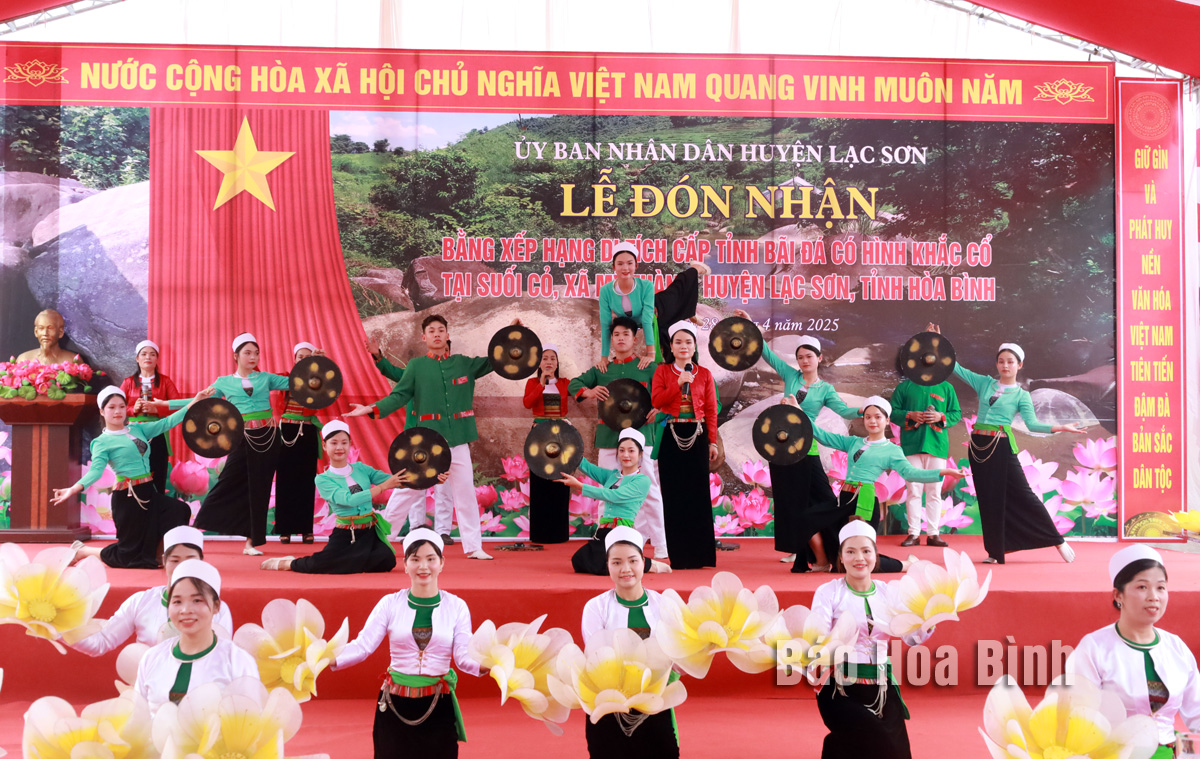The People’s Committee of Lac Son district held a ceremony on April 28 to receive the provincial relic certificate for the ancient rock carving site at Suoi Co stream, located in My Thanh commune.
A representative
from the Hoa Binh Department of Culture, Sports and Tourism presents the
provincial-level relic site certificate for the ancient rock engravings at Suoi
Co in My Thanh commune to authorities of Lac Son district.
A musical
performance staged at the ceremony.
The site is of significant historical and
archaeological value, featuring two stone blocks with ancient carvings, which
experts found to have dated back approximately 2,000 years, to the prehistoric
and protohistoric periods. In addition, the site also hosts annual cultural and
spiritual rituals.
Despite the passage of time and historical
upheavals, the site has retained and preserved the rock engravings created by
early inhabitants, reflecting humanity’s adaptation to and transformation of
the natural environment. From an archaeological perspective, the carvings are
among the few remaining prehistoric-protohistoric artworks that show the
artistic and technical sophistication of ancient stone carvings. They provide objective
and authentic ethnological and historical evidence, reflecting the beliefs,
material and spiritual life, and intellectual development of an early community
in what is now the core area of Hoa Binh province – a region rich in vestiges
of the famed Hoa Binh Civilisation.
Recognising its historical, cultural,
scientific, and tourism values, the Hoa Binh provincial People’s Committee
officially designated the site as a provincial-level archaeological relic one
under Decision No. 2628/QD-UBND, dated December 2, 2024.
The ceremony was held to honour the site’s
cultural heritage, encourage local authorities and residents to continue
protecting and promoting its value, and attract visitors.




